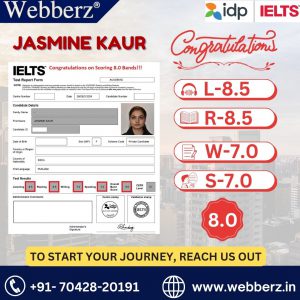OET Reading Strategies to Improve Your Score
The OET Reading sub-test assesses your ability to read and understand healthcare-related texts. Here are some strategies to help you excel:
General Strategies
- Understand the Test Format
- Part A (Expedited Reading – 15 minutes)
🔹 Four short texts related to a healthcare topic (e.g., patient leaflets, guidelines).
🔹 Answer matching, sentence completion, and short-answer questions quickly. - Part B (Workplace Texts – 45 minutes)
🔹 Six short texts (e.g., hospital policies, staff emails, manuals).
🔹 Multiple-choice questions (choose the best answer). - Part C (Longer Texts – 45 minutes total)
🔹 Two long texts (e.g., medical journal articles, research studies).
🔹 Multiple-choice questions testing your ability to infer meaning and understand opinions.
- Part A (Expedited Reading – 15 minutes)
- Develop Skimming & Scanning Skills
- Skimming: Quickly read the text to understand the main idea.
- Scanning: Look for specific words, numbers, or phrases needed to answer questions.
- Improve Healthcare Vocabulary
- Learn common medical terms, abbreviations, and synonyms used in hospital settings.
- Example: “Hypertension” = High Blood Pressure, “Rx” = Prescription.
- Identify Keywords & Paraphrasing
- Questions often rephrase information from the text.
- Look for synonyms and keyword variations instead of exact word matches.
Part-Specific Strategies
🔹 Part A: Expedited Reading (15 mins)
✅ Spend only 1–2 minutes skimming all four texts before answering.
✅ Identify headings, subheadings, bullet points, and bold words quickly.
✅ Look for dates, numbers, drug names, and specific medical conditions.
✅ Answer easy questions first—don’t get stuck on one!
🔹 Part B: Workplace Texts (MCQs)
✅ Focus on the purpose of the text—is it instructing, advising, or warning?
✅ Identify who the information is for (e.g., nurses, doctors, admin staff).
✅ Eliminate incorrect choices by checking for misleading or unrelated details.
🔹 Part C: Long Texts (MCQs)
✅ Read the questions first so you know what to look for.
✅ Identify the author’s opinion, tone, and implied meaning (not just facts).
✅ Pay attention to connecting words (e.g., “however,” “therefore,” “although”) to understand contrast and reasoning.
Extra Tips for Success
🔹 Practice under timed conditions—simulate real exam scenarios.
🔹 Read healthcare articles & guidelines—The BMJ, WHO, or NHS websites are great resources.
🔹 Don’t overthink answers—trust your first instinct if unsure.
🔹 Review past mistakes—identify




